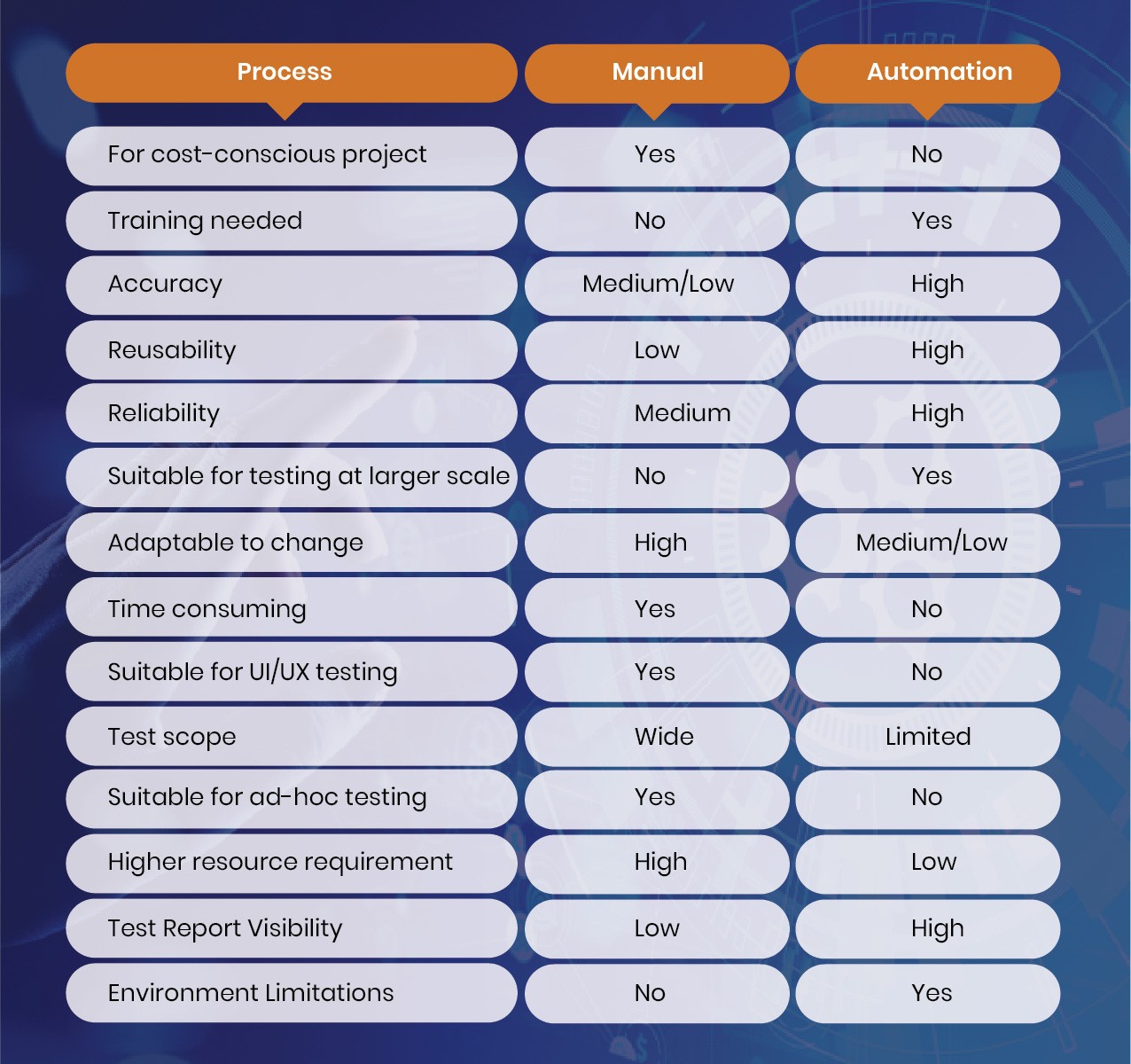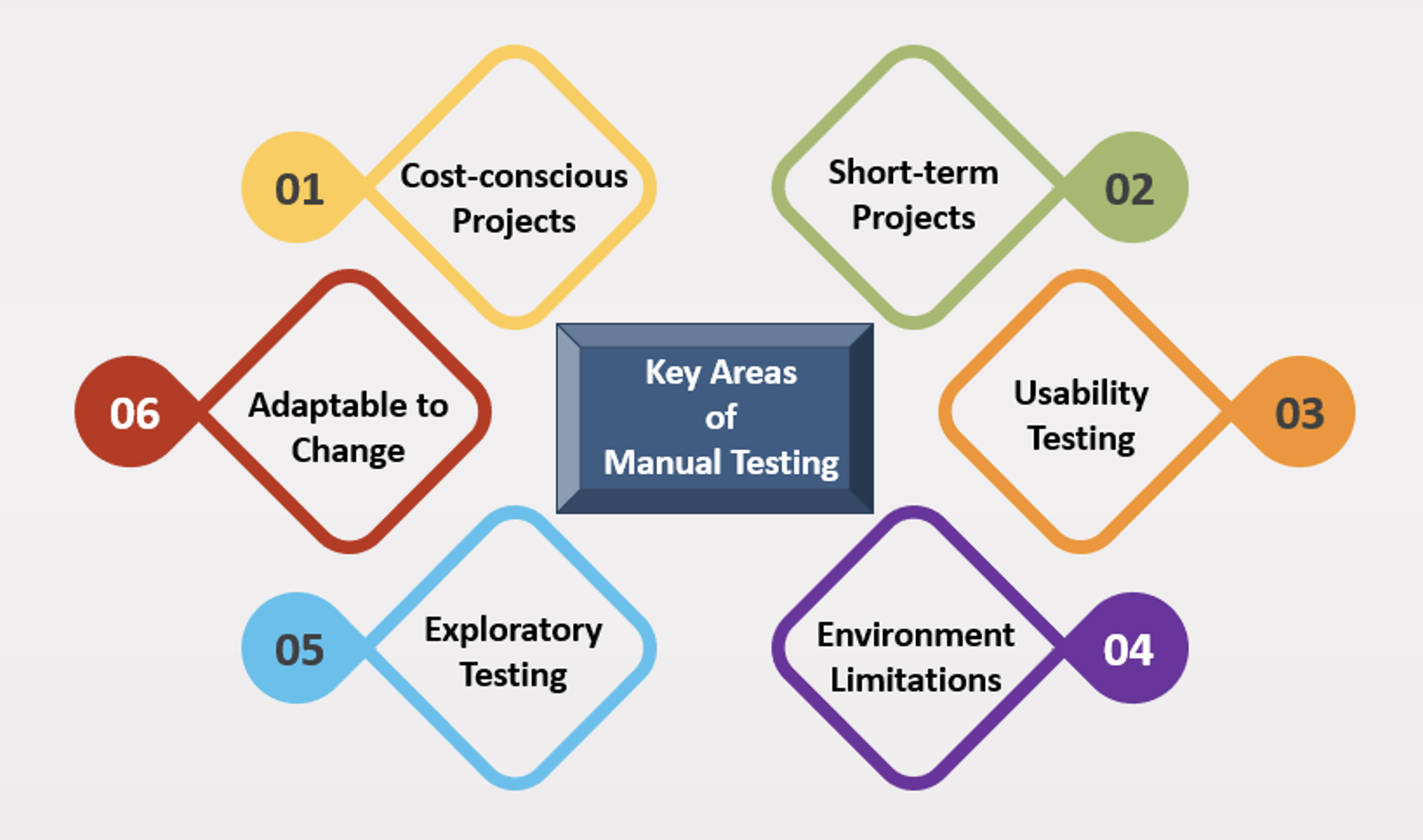Around a month ago, Raghu was reading an article about manual testing reaching the brink of extinction. Being a tester with more than a decade’s experience in manual testing, it was a shocker for him. It induced fear in him about his profession coming to an end.
The topic has been trending off and on for quite a few years now. So how true is the subject? As we know, most MNCs and mid-sized companies have started implementing the CI/CD process. It serves both the purposes of increasing the process of software delivery but also reduces common errors we humans tend to make. As tasks are automated in this process, manual work is declining, bringing it on the verge of extinction.
Until the whole process is fully automated, there will still be a need for manual testing that even Artificial Intelligence cannot replace. Even if code coverage reaches 100%, there will still be a scope of manual testing. Everything cannot be automated. At a point in time, you will hit a wall. These will be such areas which are better suited for manual testing.
Products created for a human will need a touch by a human.
As an agile environment, automation is mostly done on a regression suite. But for new features, manual testing is required for the first time. Also, to create and manage automation scripts, we need it to be done manually.
Manual V/s Automation.

If we observe the above table, it is clearly visible that automation testing has an advantage over manual testing in multiple aspects. Similarly, there are certain areas where manual testing gains an upper hand. Some of the areas are:

Cost conscious projects: The maintenance cost of the automation suite is high. Specialized automated software tools come at a premium. Additionally, automated QA engineers are more expensive to hire than their manual counterparts.
Short term projects: For such projects, the cost of automating the testing process is usually high, so automation is either limited to end–to-end test cases or only manual testing is the preferred choice.
Adaptable to change: For projects following Agile methodology, the application keeps changing every now and then as per the requirement changed by stakeholders. As such, manual testing is preferred for cycles till the requirement is frozen. In such an environment, a team of creative and flexible testers is required who can adapt to the changing requirements.
User Interface / Usability Testing: In case of Usability testing, the manual approach is better suited to tasks that are more subjective in nature and thus can’t be automated, such as reviewing the look and feel of an application.
Ad-hoc / Exploratory Testing: This testing is done by randomly creating test cases through error guessing and executing them, without following any requirements for the test. The tests are intended to be run only once unless a defect is discovered. It is the least formal test method.
Environment Limitations: There are no environment limitations when performing manual tests. Whereas with automation there always tend to be some limitations. Like Selenium and Katalon doesn’t support automation of desktop applications. Ranorex doesn’t have MacOS support. Appium doesn’t support more than one iOS device at a time and so on.
Advantages of Automation

Time saving: Compared to outsourcing or going remote places automation reduces the common quantity of labor hours. In the early 1900s, the standard workweek became around 70 hours. This has regularly been reduced to an everyday workweek of approximately 40 forty hours within the United States. This decline is basically because of automation and mechanization.
Repetitive tests: Automation is required for better handling of simpler, repetitive tests. To ensure that the code is updated, tests must be run frequently throughout the development cycle. Repeating the tests manually is time-consuming and very expensive. Create the Automated tests at once and you can run indefinitely at no additional cost. It is faster and significantly reduces time consumption from day to hours.
Reducing human error: Manually entered data is prone to making mistakes, those are not purposeful, they genuinely are errors. With the automation process, manual data can take over, reducing the danger of human error. This ensures that your data entry is of consistently high quality.
Better accuracy: Automation benefits the company because services are delivered faster, more accurately, and with higher quality. To streamline increasingly complex operations, Intelligent Automation combines Artificial Intelligence, Machine Learning, and Automation technologies.
Conclusion
Manual testing isn’t dying, but it is evolving. We have seen, and will continue to see, a shift toward more social-based and exploratory testing. That translates into less working on your own and more working in groups, as well as fewer repeatable test cases and more testing in uncharted territory. Both shifts will increase software quality tremendously.
So don’t despair and give up your craft. If, as a tester, you see automation encroaching into your space, that’s OK. Sometimes I feel it too. And as an Automator myself, I’ve seen many examples of automation done wrong.
While automation does eliminate part of the job, it can free you to do some incredibly interesting and valuable things. And whether those on the cutting edge, believe it or not, the skills testers bring are crucial to software quality.
We still very much need the strategy, the critical thinking, and, frankly, the humanness of testers for us to continue shipping and increasing the quality of software. For better collaboration, manual and automation testing need to work in perfect harmony to ensure the best version a product could have.
How Impelsys has assisted businesses with a blended approach of manual & automation testing processes?
Over the last few years, Impelsys has built expertise in automating the Smoke test suites for various complex processes of large businesses. To be competitive in the market and to provide the latest solution to their client Impelsys uses advanced tools to automate the process like Selenium, Cucumber, TestNG, etc.
Impelsys has automated more than 50% of test cases for a leading education provider in a very short time, significantly reducing the time to market for the desired applications. As a result, overall test time was reduced by 50%.
For a leading global editor & research firm, a ratio of 80% automation and a 20% manual test was implemented for scenarios that cannot be tested using automation, such as UI and usability. Using an automated suite, Impelsys saved over 16 hours of testing time each month.
Connect with us:
Looking for an Expert Team that can help you bring your vision to life? That’s exactly what our team of ideators, business consultants, architects, and engineers have done for our clients over the years. Leveraging over 20 years of rich technology experience, Impelsys is diligently creating technology solutions with our tried-and-tested digital transformation approach and application engineering expertise to drive business growth across industry verticals. To learn more, visit Impelsys or write to us at marketing@impelsys.com to get started.
Authored by –

![]()
Rinky Lahoty
Senior Tech Lead – QA